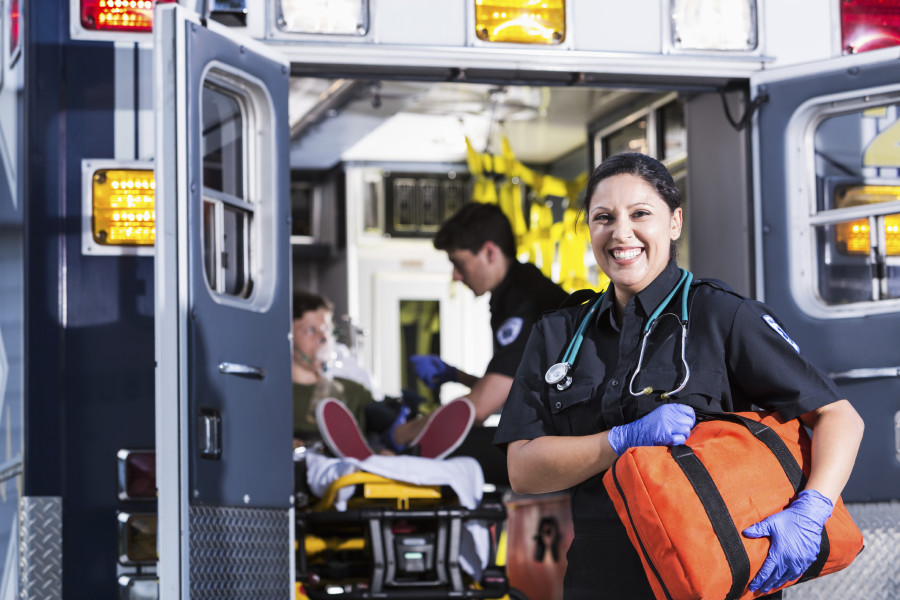
You know the old saying, seeing is believing?
The same concept applies to “ride alongs,” one of the most effective strategies for educating members of the public, media and stakeholders about the vital role of EMS.
Allina Health EMS, for example, offers ride alongs with legislators who are involved with decisions impacting EMS. “It helps build relationships, so they know who to reach out to if they have questions,” said Susan Long, Allina’s director of clinical services.
Long and the Allina team also take administrators and other medical professionals from within their large health system on ambulance runs. “It makes sure those people in our chain of command understand what we do and what we need,” she said.
EMS Week (May 21-27) is an excellent time to invite special guests, elected officials or media to spend a few hours with your crews.
To help EMS get the most out of ride alongs, experts from Allina Health EMS, Christian Hospital EMS and MedStar Mobile Healthcare offered the following tips on planning your day, protecting patient privacy and ensuring the safety of all involved.
DETERMINE YOUR ITINERARY.
When Allina Health EMS invites elected officials on ride alongs, they offer to pick up the legislator at their office, and will often stop by Allina’s headquarters to meet with senior management and talk with crews. “We tailor it to the individual, including how much time they have and what they want to get out of it,” Long said. That can include touring operations or communications centers, or meeting with other members of your staff, in addition to riding out with crews.
BRIEF OBSERVERS ON PATIENT PRIVACY AND CONFIDENTIALITY LAWS.
Provide written information on HIPAA for observers to sign. “We call it ‘Vegas rules.’ What you see on the ride along stays on the ride along,” said Brian Hokamp, chief of Christian Hospital EMS in St. Louis. As an added step, MedStar also has observers watch and take a test on a HIPAA training video. Get releases signed. In addition to the confidentiality agreement, observers should also sign a liability waiver. Patients also need to give written permission allowing the observer to witness patient care. You may also opt to have observers ride in the front of the ambulance during transports to enhance patient privacy. (For specific questions about how to word these waivers, consult your legal counsel.)
CHOOSE THE RIGHT CREW.
Some highly competent clinicians would rather get splashed with an unknown bodily fluid than chat with reporters or politicians. Choose a crew that is experienced and will be comfortable, articulate and tactful when sharing their thoughts about their profession, their work environment and their challenges.
DECIDE HOW LONG THE RIDE ALONG WILL LAST.
“When someone comes to ride along with us, we don’t want to hold them hostage,” Long said. Ask how long your observer is interested in riding with the crew, and be flexible if it seems your observer has had enough! “We want to make sure we don’t put anyone in situations that make them uncomfortable,” Long said. “Some come in with medical knowledge. Some will pass out at the sight of blood.”
HAVE A PLAN B.
Conditions in the field are unpredictable. Decide ahead of time what you’ll do if a call becomes too serious or dangerous for outsiders to witness. For example, you may tell your observer in advance that you may ask them to sit in front, or even be dropped off on a corner, if crews need the space in the back for patient care.
“Patients are in a very fragile state, and they may get to the point they don’t need anyone else back there,” Hokamp said. “Crews need to be sensitive to that and make adjustments.” Hokamp also recommends establishing a code word or phrase, such as “Go get my green bag out of the truck,” if it seems a patient interaction may become violent.
TAKE PICTURES.
Be sure to take pictures of your crew with their ride along participant. Elected officials may want to share these on social media or websites. Follow-up later. Long recommends checking in with ride along participants afterward to thank them for coming and ask if they have any questions. “It’s about creating that relationship,” she said.
KNOW THE TIME YOU SPEND CONDUCTING RIDE ALONGS IS WORTH IT.
“There are a lot of unknowns when it comes to EMS. I heard someone in my own hospital today say, ‘ambulance driver.’ Ride alongs help dispel those misconceptions,” Hokamp said. “It shows people what we do in the field and the impact we can have on patients.”
DOES THE MEDIA NEED SPECIAL HANDLING?
EMS agencies differ on whether they permit media to ride along in the back of an ambulance. At MedStar, media may not ride in ambulances on 911 calls. Instead, if a reporter wants to observe a crew during a 911 shift, an EMS supervisor will take reporters in a separate vehicle to the scene. This protects patient privacy but also enables the supervisor to ensure that the reporter gets to see crews in action. The supervisor then requests the patient’s permission and gets the HIPAA release signed.
Members of the media are allowed to ride in the back of ambulances during non-911 transports or in vehicles with mobile integrated healthcare providers conducting patient visits. Allina Health EMS occasionally permits media on 911 calls, and works with their hospital public relations department to make arrangements. Ride alongs involving media are usually related to a specific story vs. providing a purely educational experience – for example, one TV station rode along with an Allina ambulance crew as part of a story on how to survive while taking care of patients when it’s 40-below during a Minnesota winter!
